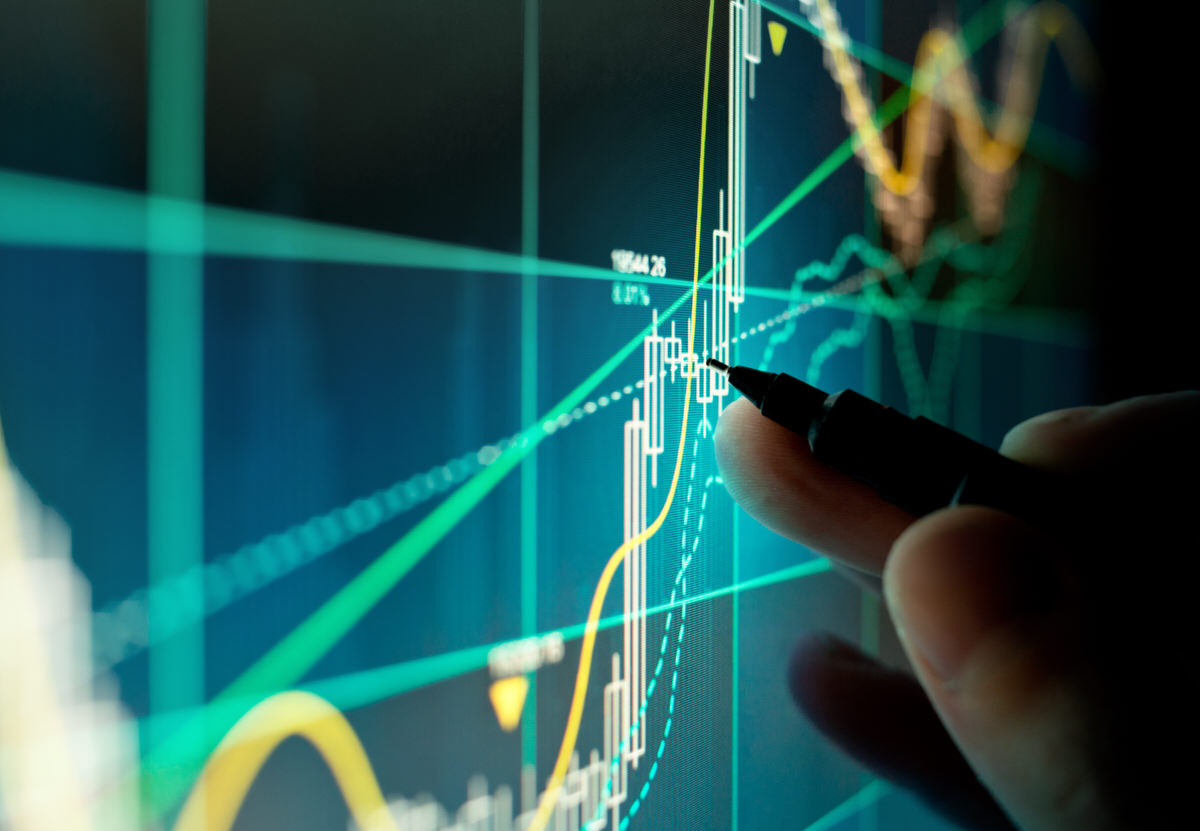by Hubert Marleau, Market Economist, Palos Management
October 27, 2023
We all have problems with predictions, specifically about where the economy is heading, not least whether a business downturn is in our midst. This does not, however, mean that we don't know anything about macroeconomics, like business cycles. Such business cycles in the past illustrate that rising inflation always foreshadows downturns, with varying lags and (usually) acceleration in the money supply preceding inflation. In order to bring the latter down to an acceptable level, monetary deceleration is needed, which commonly occurs through an anti-cyclical central bank policy. This process is always transmitted through the financial markets to the real economy. It’s straightforward: Money supply rises, inflation rises, Fed tightens, money supply falls, unemployment rises, recession ensues and inflation falls.
Presently, the Federal Reserve is trying to steer the US economy to a safe landing, without further increases in the official cost of money, which currently stands at 5.50%. On this one, however, history is not on the side of the Fed. The yield curve is still inverted, the policy rate is above neutral, the bond market is volatile, and the money supply is stuck in a rut. Yet, the economy keeps on going up and up, while inflation keeps on going down and down.
A short primer on what is happening in the economy can be helpful to figure out where we are and if what we see is sustainable. The Bureau of Economic Analysis (BEA) released preliminary GDP numbers on Thursday, giving investors a “compte-rendu” of what has been going on recently.
In contrast to the strong economic data that the Atlanta Fed’s Now Casting Model, which estimated that the R-GDP rose at the annual rate of 5.4% in Q3, the BEA reported an annual rate of increase of 4.9%. It may have been a bit less than expected, but it had still grown at the fastest pace since the last quarter of 2021, and was much stronger than consensus had anticipated just a few months earlier. Mercifully, the core PCE price index printed a below-consensus 2.4% annual increase, down from 3.7% in Q2, with more decreases in the offing. The Adobe Digital Price Index, meanwhile, itself fell 0.61% in September, with all categories declining except for groceries and medical supplies. According to Truflation, a daily review of prices on the Internet, overall prices are 2.3% higher than a year ago. The Federal Reserve's preferred inflation gauge, core personal expenditures price index matched expectations, cooling to an annual rate of 3.7% in September. That is why the market only sees a 1% chance that the Fed will raise rates again on November 1.
In nominal terms, the overall level of economic activity rose at the annual rate of 8.5%, of which inflation accounted for 3.5% of the increase, employment 1.3% and productivity a whopping estimate of 3.7%: while fixed expenditures that require financing accounted for 27.3% of total spending, but as much as 49.6% in real terms, demonstrating that conventional consumer spending accounted for 85% of total inflation and only 55% of overall growth. In monetary terms, the Q3-GDP results were brought about by a 3.0% increase in the money stock and 5.5% in its turnover, the latter achieved by selling assets, lifting the 5-year bond yield 100 bps to 4.90% in 3 months flat.
Q4 growth prospects are definitely less rosy because the economy’s current resilience is facing new tests like high interest rates, which should breach spending that requires financing, as well as contending with geopolitical clashes and domestic political discords, which could spoil consumer sentiment. Indeed, I would be surprised if consumption growth remained over-buoyant for much longer: the aforementioned factors should weigh on overall growth because consumer spending accounts for most of the economic output. In this connection, businesses may be compelled to reduce their $405 billion worth of inventories accumulated over the past 12 months.
In this respect, economists polled by Wall Street Journal, forecast that fourth-quarter GDP would grow at a 0.9% annual rate. The economy might not give us an encore, but the above prediction may be too much of a giveback. There are 3 basic reasons why consumer spending may remain somewhat more supple than presumed. First, personal savings, at 3.8% of personal disposable income may not be as low as they appear. What has remained unspent from 2022 and 2023 was mainly extra government transfers that had been saved from 2020 and 2021. An under-the-hood observation, however, reveals that the personal savings rate may actually be closer to 7%. Second, personal income may be more secure than previously thought. Labour is more demanding, wage rates are running faster than inflation, and businesses seem more inclined to reducing job openings than confiscating jobs. Third, deficit spending by the Federal Government is rampant, ongoing, and not diminishing anytime soon. Julian Ferguson of MacroStrategy Partnership noted: “... in Q3 nominal GDP rose $560 bn. Government deficit spending (i.e. net increase in debt $852bn less $263bn increase in the TGA) accounted for $588bn of nominal growth.” A coincidence? Perhaps not. The Atlanta Fed’s initial estimate of fourth-quarter GDP growth is 2.3%, and the NY Fed Nowcast model stands at 2.8%.
Incidentally, the aforementioned observations are not without precedent. It occurred in the post-WWII period, when GIs returned home. Like today, the economy bowed to massive distortions, which are exaggerating the business cycle.
There is no doubt, though, that we are navigating a foggy global landscape, with tragic events unfolding in Gaza and Ukraine, plus potential ones in Asia. It is not that I want to discount these trouble spots: there are many serious minds out there who are arguing that we are living in a dangerous time, with threats looming from Russia, China, North Korea and Iran. Gold has had a nice run, rising to $2016, and Bitcoin has been on an absolute tear rising to a high of $33905.
Safe haven assets were back in the limelight, too, now that movement in these have settled down. In fact, from the point of view of a wider war in the Middle East, it does not look as if markets are worried that things are about to get worse than they actually are. They are not asleep, but as long as the whole geopolitical mess remains as a theoretical show-off contest between continental power versus maritime power, the shambles will likely remain localised, and neither disrupting the world’s large economies nor threatening the prevailing world order. Indeed, looking at the stock market reaction to 25 of the most significant geopolitical crises since the Second World War, the S&P 500 dropped on average by around 4%, reaching bottom in 15 days, but recovering fully in 33 days. Sixteen of these stemmed from events in the Middle East or from conflicts with terror groups there.
Thus, I would rather stick to my knitting and read what the bond market and financial conditions are telegraphing. In a nutshell, the swap market is predicting that inflation in one year will be 2.3% year-over-year, and productivity gains will be good enough to keep annual growth around 2.0%. While I understand that the much-talked-about recession is a 35% risk, I’m not fretting. On average, these last for 10 months, but offer the S&P 500 solid bounces even when the economy is still mired in a downturn. Joseph Quinlan, the new chief strategist at Bank of America, argued in a note that the S&P 500 tends to peak 13 months before a recession begins. The last such peak was on January 6, 2022, when it touched 4797. It stood at 4117 on Friday, breaching the 4200 support level. The next major one is 3941. This does not, however, mean it is destined to drop another 3%. 80% of the companies that have so far reported third-quarter earnings have exceeded expectations and the yield on the 10-year Treasury note is having a hard time crossing 5.00%. In this connection, the recent see-off is probably a downward rerating of the market’s valuation, because the earnings outlook remains quite good. On the average, P/E multiples have fallen from 23..2X in January 2022 to 16.5X. Meanwhile, market-breadth indicators are sitting at prior oversold extremes and so is CNN's Fear and Greed index. Two excellent contrarian pointers: darkness before the dawn.
Day Hagan Asset Management came with an interesting comment: “The S&P 500 has had 0 record high this year. In fact, it's been 659 days since a new high was recorded. When there have been 0 record highs in a year, the following year 's returns have been good, up +13.1%. When there have been more than 35 record highs in a year, the next year’s median gain was just +5.8%.”
More importantly, the truth is that the US economy has more or less returned to its pre-pandemic growth trend. The NY Fed’s Weekly Economic Index (WEI) is holding well, rising to 2.86 due to retail sales, steel production, taxes withheld, railroad traffic, and electricity output. In any case, recessions have short lives and often bring about very favourable entry points. And yes, the Federal Reserve is paying a lot more attention to financial conditions than they used to. That is why it decided to keep rates on hold. Credit spreads have hardly widened, and BAA bonds are yielding 6.70%, 175 bps above 10-year Treasuries, the same as 3 months ago. In fact, the corporate bond market appears healthy trading within historical norms.
Dividend-yielding stocks that are returning between 5.50% and 7.50% without consideration for organic growth (which I clock at 2.00% per year), are alluring as an alternative or as a barbell balance when one acknowledges that in the fullness of time stocks have given a market return of about 9.0%. Indeed, the difference is not to be sniffed at, considering the relative certainty of dividends, which incidentally cover the risk premium handsomely. Moreover, on an after-tax basis, they are even more alluring for Canadian investors. A 7.00%-to-7.50% dividend-yielding stock has a premium-tax advantage of about 3.50%.
If this is not a good entry point, what is? On Friday, yields on 5-year Canadian denominated bonds fell drastically to 4.10% from 4.42% within two weeks.
Copyright © Palos Management
















